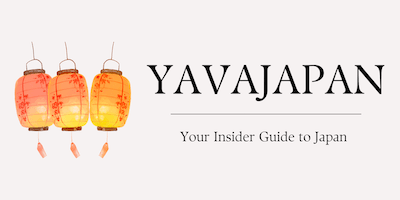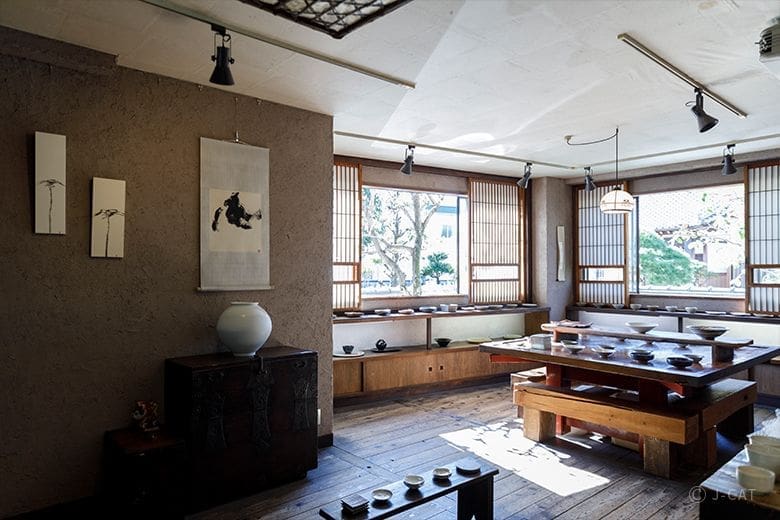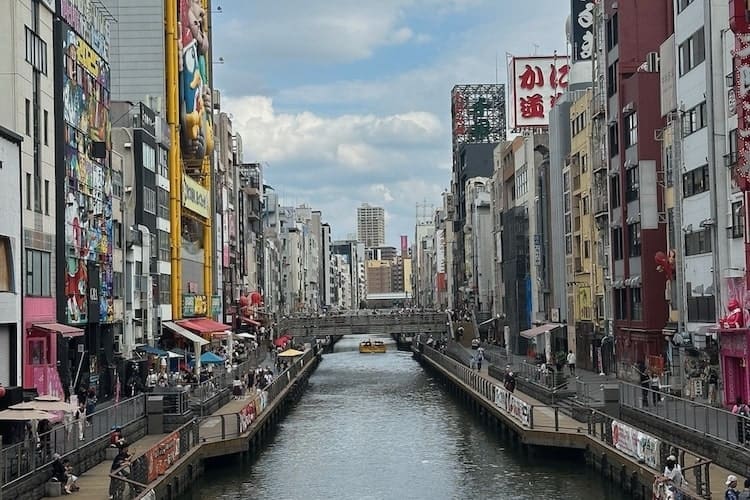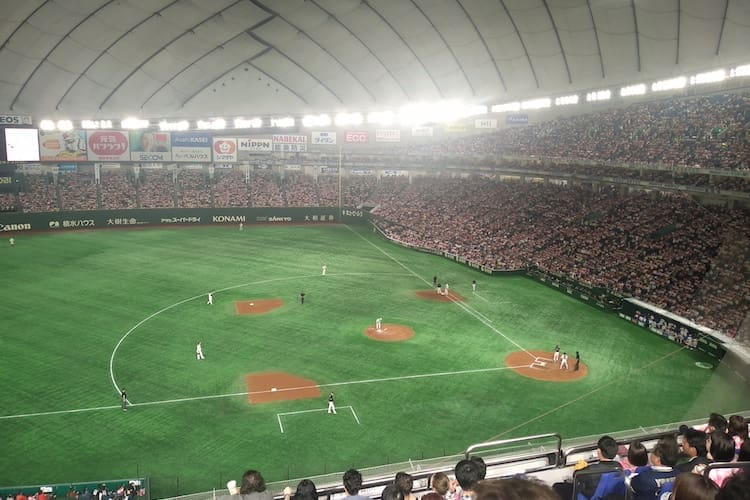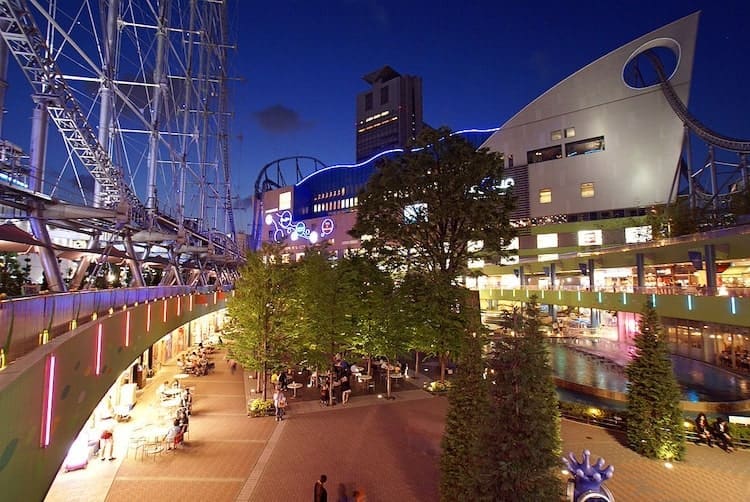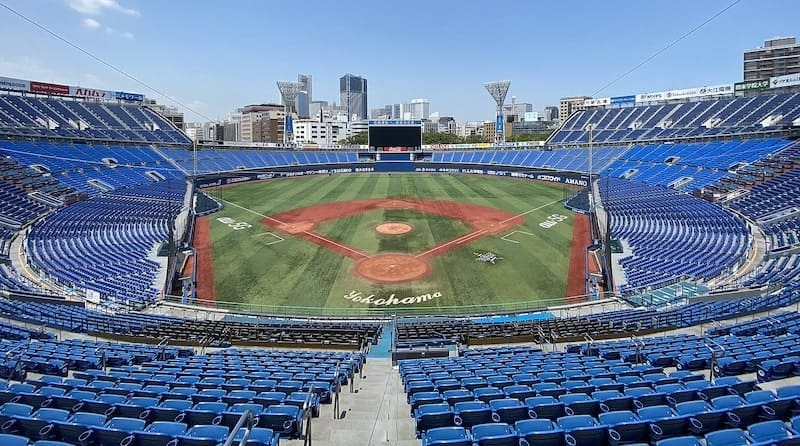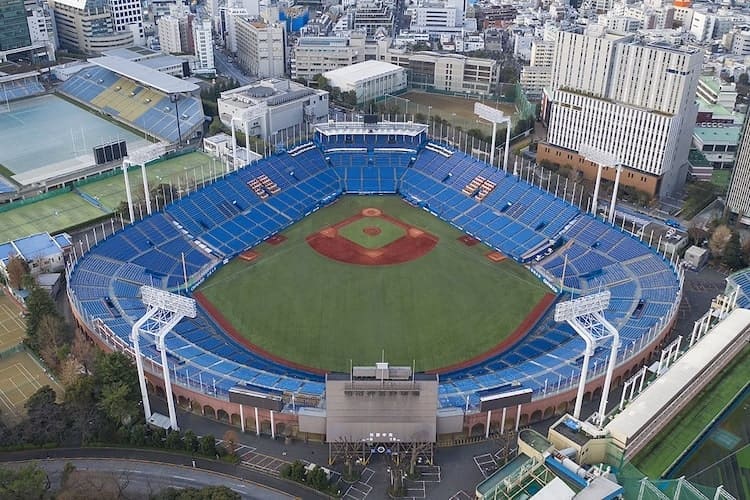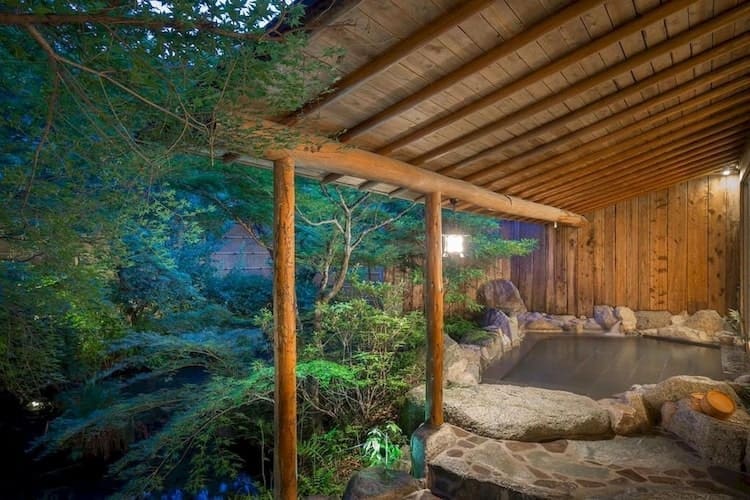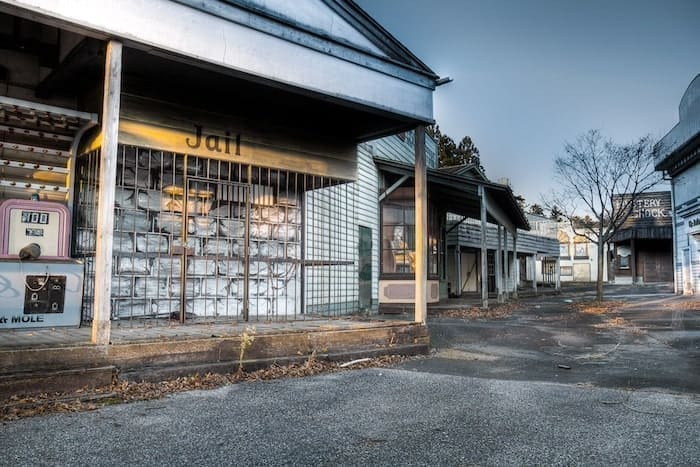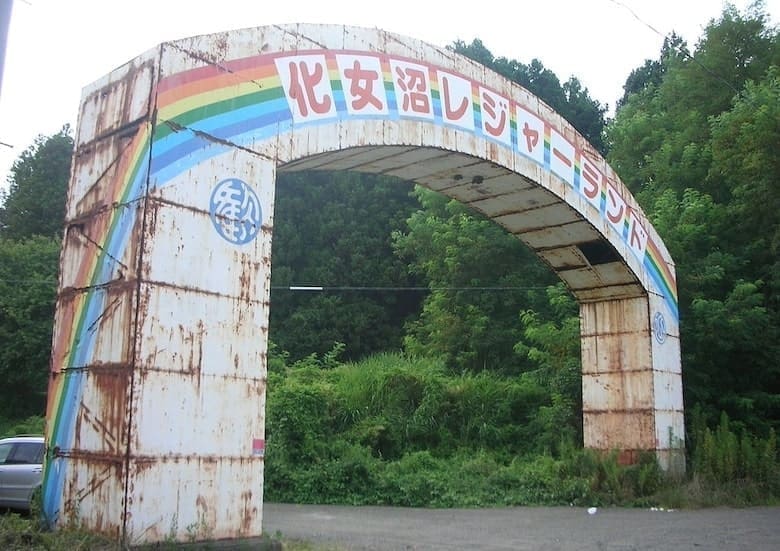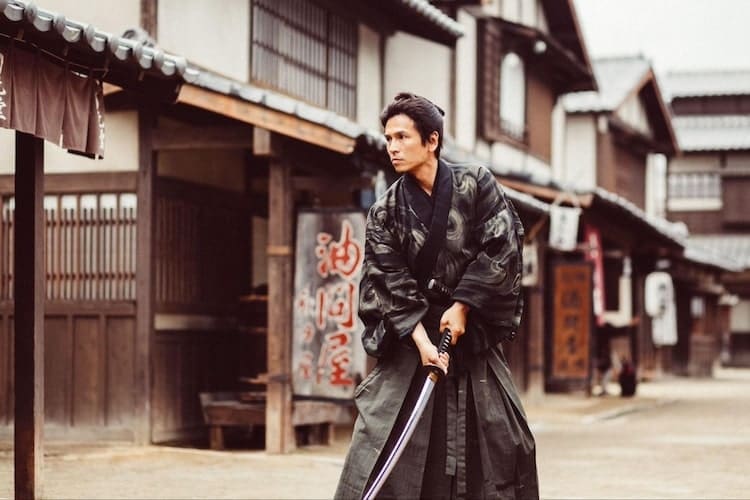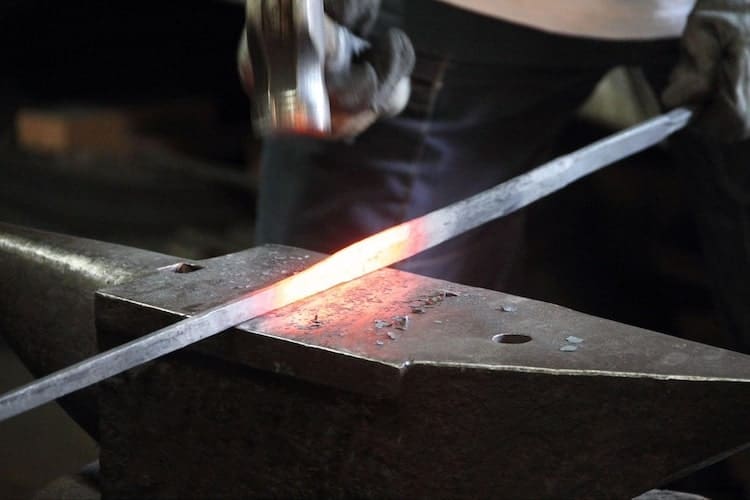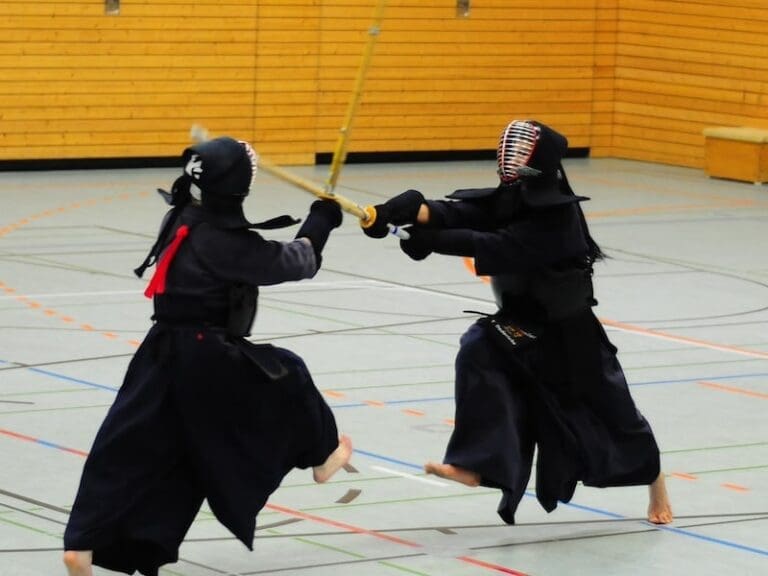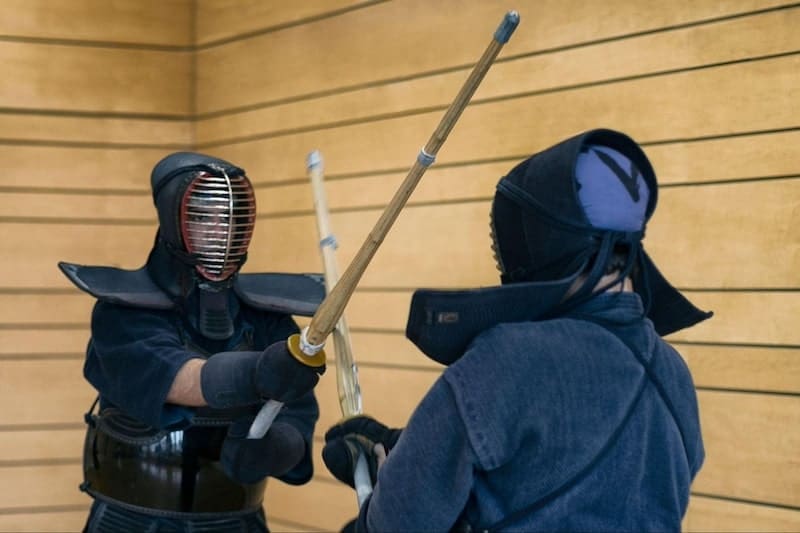After seven years working in the Japanese travel industry with travel agencies and online booking websites, and helping thousands of international visitors plan their trips, I noticed that traditional Japanese cultural experiences often leave a deeper mark, sometimes almost spiritual compared to other activities.
But beyond the usual cultural experiences like calligraphy, tea ceremony, wearing a kimono, and exploring Kyoto’s temples, most visitors don’t really know what else is out there. There are so many unique traditional experiences in Japan that offer an authentic taste of Japanese culture, but they’re not always easy to find. That’s why I put together this list of 67 traditional and cultural things to do in Japan.
I only included cultural experiences that date back centuries and are part of Japan’s history.
But I didn’t just list them.
I also researched and curated the best experiences for each one (some of which I’ve tested myself, others I know of via my work in the industry).
You will find that most of the best experiences are from a company called Wabunka. That’s because they specialize in private (no mixed groups), authentic Japanese cultural experiences. I always recommend doing at least one when visiting Japan.
Wabunka is of course more expensive than standard experiences (often ¥20,000-¥40,000 per person), so I’ve also included a cheaper alternative. These are often group classes designed for tourists—less authentic, but still very enjoyable.
You will find the links in the golden buttons in each section.
- Handicrafts – 11 Traditional Manual Arts Unique to Japan
- Craftsmanship – 13 Traditional Japanese Industries to Discover
- Traditional Japanese Culture – 12 Best Things To Do
- Japanese Calligraphy (Shodo)
- Japanese Tea Ceremony
- Ikebana (Flower Arranging)
- Japanese Incense Ceremony (Kodo)
- Kimono Wearing
- Geisha Culture
- Oiran Experience (Traditional Courtesan Culture)
- Samurai Experience
- Ninja Experience
- Ainu Cultural Experience (Indigenous People of Japan)
- Japanese Festival Participation (e.g., Gion Matsuri)
- Yokai (Japanese Folklore) Exploration
- Meditation and Relaxation – 6 Ways To Experience Zen in Japan
- Arts and Performance – 10 Traditional Japanese Disciplines
- Sports – 6 Traditional Japanese Sports You Can Experience
- Gastronomy – 9 Traditional Japanese Food and Drinks
Handicrafts – 11 Traditional Manual Arts Unique to Japan
Kintsugi (Golden Joinery)
Kintsugi, or golden joinery, is the art of repairing broken pottery with lacquer dusted or mixed with powdered gold, silver, or platinum. This practice highlights the cracks and repairs as part of the object’s history, rather than something to hide. By participating in a kintsugi workshop, expect to learn not only a unique art form but also a philosophy of embracing flaws and imperfections. It’s a perfect metaphor for life: sometimes, things have to break and be mended to become more beautiful.
I participated this kintsugi experience in Tokyo, and I can’t recommend it enough. Here is my full review.
Read also: Discovering the Best Kintsugi Workshops in Tokyo and Kyoto
Chopstick Making
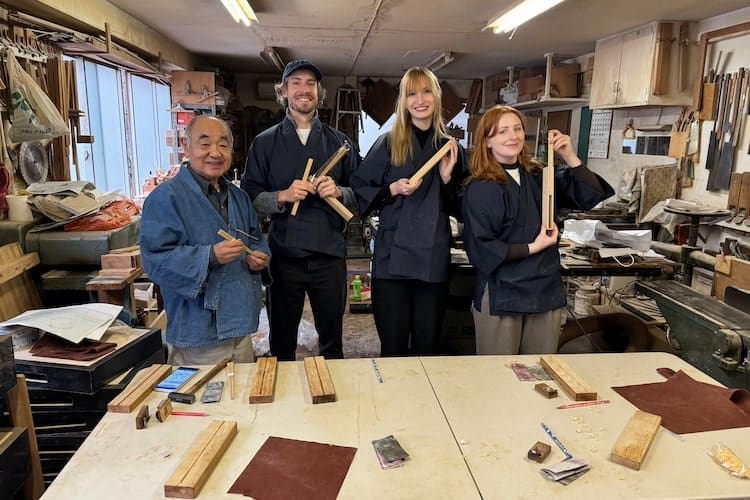
Chopsticks are so integral to Japanese dining culture, that they even have their own etiquette. Chopstick making is a hands-on experience that teaches the art of crafting one of these fundamental tools. Participants learn about the different types of woods used, carving, sanding, and polishing techniques used in Japan. Expect to gain a newfound appreciation for this seemingly simple utensil, and maybe a bit of surprise at how challenging it can be to make two identical sticks (I sure did when I made my own chopsticks at Mogami Kogei workshop).
(This Wabunka experience is the Mogami Kogei workshop I joined)
Read also: How to Make Your Own Chopsticks in Japan: The Best Workshops in Tokyo and Kyoto
Origami (Paper Folding)
Origami is the traditional Japanese art of paper folding, transforming a flat sheet of paper into a finished sculpture through folding and sculpting techniques. From simple cranes to intricate dragons, origami is both an art form and a symbolic practice with deep roots in Japanese culture. Participating in an origami workshop, you can expect to learn the delicate folds, the significance behind various models, and leave with your own handmade creations, possibly discovering a new level of patience you never knew you had.
This one above is already very affordable, but here is a cheaper alternative if needed:
Ukiyo-e (Woodblock Printing)
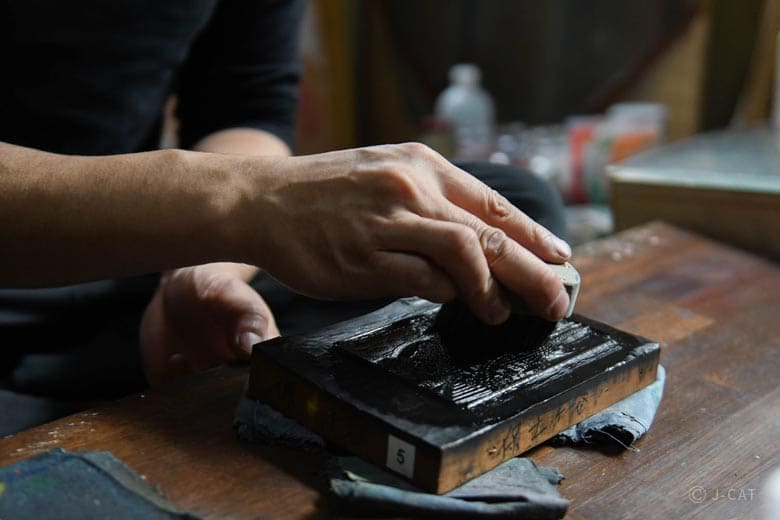
Ukiyo-e, or “pictures of the floating world,” is a genre of Japanese art that flourished from the 17th through the 19th centuries, featuring woodblock prints and paintings of everything from Edo period daily life and landscapes to tales of history and the kabuki theater. These prints were the Instagram of their day, capturing fleeting moments of pleasure and beauty. Participating in an ukiyo-e workshop, you can expect to learn about the meticulous techniques involved in carving, inking, and pressing to create your own print. It’s a chance to create your own ‘vintage post’ without needing a filter.
Sumi-e (Japanese Ink Wash Painting)
Sumi-e, the Japanese ink wash painting, emphasizes the beauty of simplicity and the use of negative space to create compositions with minimal strokes. It’s a practice that requires concentration, control, and a Zen-like mindset to capture the spirit of nature in black ink. Sumi-e teaches that sometimes, less is indeed more—except when it comes to the amount of ink on your brush. Perfect for aspiring artists and those looking to add a touch of Zen to their home decor, or for anyone who’s ever thought their accidental ink splatters looked kind of artistic.
And finally, here is an even more affordable option that look like a great group class as well:
Kataezome (Stencil Dyeing)
Kataezome is a traditional Japanese method of stencil dyeing fabrics, often used for kimonos and textiles. It involves cutting designs into paper stencils and applying dye through them. This technique is a beautiful blend of precision and creativity, allowing for intricate patterns and designs. It’s like screen printing, but with a level of detail that makes every fabric a story in color.
Kamakura-bori Wood Carving
Kamakura-bori wood carving offers a slice into the world of traditional Japanese woodworking, where every chisel mark tells a story. Characterized by its deep, carved reliefs and lacquer finish, it’s a technique that turns wood into detailed, three-dimensional works of art. This craft is a test of precision, patience, and the ability to not get too frustrated when you accidentally carve in the wrong direction. It’s an experience suited for those who appreciate the beauty in details and have a steady hand, or at least a good sense of humor about their mistakes.
Japanese Pottery Workshop

Japanese pottery is one of Japan’s oldest art forms, dating back to around 14,000 BC. Over centuries, it has evolved, reflecting various cultural influences and branching out in several different styles like Arita Ware, Kitani Ware, Kiyozumi Ware, and many others.
Participating in a Japanese pottery workshop allows for a hands-on experience in this ancient art, teaching techniques that have been passed down through generations—a lot of generations. It’s a muddy, messy, and utterly satisfying way to explore Japanese culture, with the added bonus of having something you can claim to have made yourself, imperfections and all.
Japanese Fan Making
Japanese fan making is the craft of creating beautiful, functional fans, which can range from simple paper designs to intricate silk and bamboo creations. In a fan-making workshop, expect to learn about the art and history behind these cooling devices, and leave with a personalized fan that’s as much a statement piece as it is a way to beat the heat.
Daruma Doll Painting
These funny-looking red dolls symbolize persistence and goal-setting in Japanese culture. Based on a Zen Buddhist legend, Daruma dolls encourage setting and achieving ambitious goals. Painting one eye when you set a goal and the other when it’s achieved turns this into a creative and meaningful activity. It’s a whimsical yet profound way to connect with a tradition that celebrates perseverance.
Daruma doll painting involves customizing your own Daruma, a traditional Japanese wishing doll. These dolls are symbols of perseverance and luck, with the custom of coloring in one eye when you make a wish and the other when it comes true. Participating in this activity, expect a creative outlet mixed with a touch of personal reflection—just try not to blink before you’ve finished painting both eyes.
This experience below looks a bit more authentic and is very affordable, but is located in Gunma, outside of Tokyo:
Furoshiki (Cloth Wrapping)
Furoshiki refers to the traditional Japanese technique of cloth wrapping, used to transport clothes, gifts, or other goods. This environmentally friendly practice not only reduces waste but also turns the art of gift-giving into a visually stunning experience. Engaging in a furoshiki workshop, you can expect to learn various folding techniques to beautifully wrap almost anything. It’s a great way to ensure your lunch is dressed more stylishly than you are.
Craftsmanship – 13 Traditional Japanese Industries to Discover
Knife Making
Japanese knives are prized worldwide for their precision, durability, and craftsmanship. Knife-making workshops reveal the meticulous process behind these culinary tools, from forging the blade to sharpening it to a fine edge. It’s an experience that cuts right to the heart of Japanese culinary culture, showing that behind every great chef is an even greater blade, and behind every great blade is a great artisan.
Note that you will create a kitchen knife to take home with you in this Wabunka experience. For affordable alternatives, you will need to look at experiences that do not include the knife in the cost of the experience, like this one:
Read also: How to Make Your Own Knife in Japan: Workshops Guide
Samurai Sword (Katana) Making
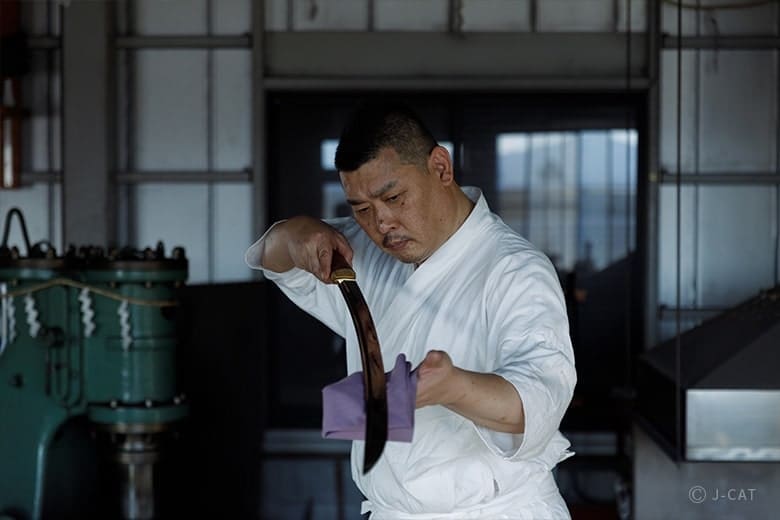
Samurai sword (katana) making is a pilgrimage into the heart of Japanese martial culture. Katana were deadly weapons back in the days. Well, they still are, but today they’re especially considered a work of art. Watching a master smith forge a katana is like seeing a magician at work, except the magic is real, and it can cut through anything. You’ll leave with a deep respect for the craftsmanship involved and a slight worry about how excited you got watching metal being hammered.
As far as I know and based on my research, there are no affordable katana forging experiences. There are very few swordsmiths in Japan, and making a katana usually takes years, making this type of experiences very expensive. However, there are some more affordable alternatives where you can visit a historic workshop and learn about katana polishing instead of the actual forging process:
Read also: How to Make a Samurai Sword: Process and Best Experiences in Japan
Japanese Lantern Making
Japanese lanterns, called chochin, traditionally made of paper and bamboo, have a history dating back to the Nara period (710-794 AD). They were initially used in Buddhist temples and later became popular for their aesthetic and functional use in festivals and homes.
Japanese lantern making is a craft that combines function with beauty, creating lanterns that light up and decorate spaces. Participants learn about the materials and techniques used to make traditional paper lanterns. It’s an illuminating experience that sheds light on your artistic talents and might just brighten up your living space.
Note: the page is in Japanese, and the lanterns you’ll make in this experience are smaller-sized.
Japanese Roof Tile (Kawara)
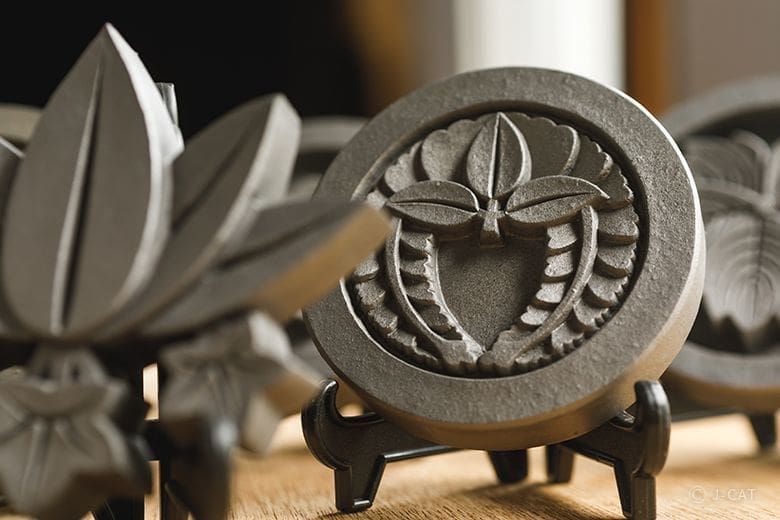
Kawara, the traditional Japanese roof tile, is notable for its durability and aesthetic appeal. Understanding the craft of Kawara making sheds light on a key element of Japanese architecture that protects and beautifies. It’s a lesson in how something as mundane as a roof tile can be elevated to an art form, proving that true protection is both strong and beautiful. You’d think this artisanship is too specific to experience. But yes, you can actually tour a kiln in Kyoto and meet its head artisan. And not any kiln, it’s the last one in Kyoto to make roof tiles by hand.
Japanese Silk Weaving
Japanese silk weaving is an intricate craft, producing textiles that are prized for their beauty and quality. Learning about this traditional art, expect to gain appreciation for the skill and patience required to produce each piece of fabric. It’s an experience that weaves together history, culture, and artistry, offering a thread of connection (pun intended) to Japan’s textile heritage.
Geta Making (Traditional Footwear)
Geta making is the craft of creating traditional Japanese wooden sandals, known for their elevated wooden bases and fabric thongs. In a geta-making workshop, you can expect to learn about the different styles and the intricate process of carving and assembling these iconic shoes. Just think, by the end, you’ll not only have a unique souvenir but also something to wear that’ll make you taller, with the added thrill of trying not to trip over your own feet.
Edo Glass
Edo glass crafting, or Edo Kiriko, is a traditional Japanese glassmaking technique that dates back to the Edo period. It’s also your chance to get hands-on with creating intricately cut glass that’s so pretty you’ll be afraid to use it. This traditional technique involves cutting patterns into colored glass, creating pieces that are as functional as they are artistic. Just when you thought your home was full, you’ll find yourself making room for that extra set of glasses nobody is allowed to touch.
Japanese Silverware
Diving into the world of Japanese silverware, you’ll discover that forks and spoons can be more than just eating utensils; they can be miniature sculptures that make every meal a cultural experience. Learning about the craftsmanship behind each piece, you might find yourself developing a new appreciation for your cutlery, possibly to the point of giving each piece a name and backstory.
Kimono Making
Kimono making is an intricate process that involves selecting the right fabric, cutting it to precise measurements, and sewing it together with an attention to detail that borders on the obsessive. Wearing a kimono is not just about adorning oneself in traditional Japanese attire; it’s about wrapping oneself in history, culture, and art. It’s a fashion statement that says, “I have the patience of a saint and the style of an emperor”—provided you remember how to put it on correctly.
Indigo Dyeing (Aizome)
Indigo dyeing, or Aizome, is a traditional Japanese technique of dyeing fabrics using indigo, known for its distinctive deep blue color. An indigo dyeing hands-on workshop teaches the process from leaf to fabric, highlighting the natural beauty and versatility of indigo. Expect to leave not just with a unique piece of clothing or fabric but possibly with blue hands, a telltale sign of a true artisan.
Denim Industry
This activity above is in Okayama, the birthplace of denim, but you can also do it in Betty Smith’s Tokyo branch if that’s more convenient.
Washi Paper Making
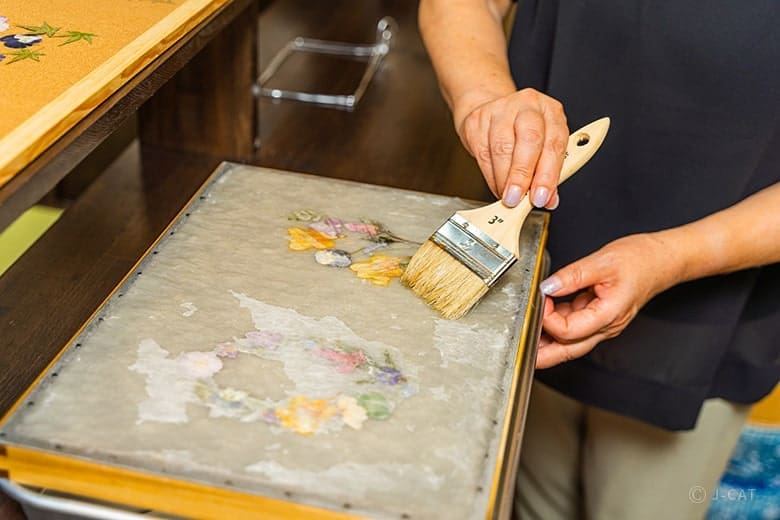
Washi paper, known for its strength and durability, is made from the fibers of the gampi tree, mitsumata shrub, or mulberry. It’s a versatile Japanese paper that’s good for everything from writing to crafting to occasionally wrapping around yourself when you run out of parchment for your samurai cosplay. The process of making washi is a tradition that has been passed down through generations, involving soaking, pounding, and drying. A hands-on workshop teaches you the ancient techniques of papermaking, blending art with a splash of practicality. It’s perfect for crafters, artists, and anyone who gets excited when watching DIY videos on YouTube.
Wagasa Making (Japanese Umbrella)
Wagasa, the traditional Japanese umbrella, is known for its beauty and craftsmanship. Made from bamboo and washi paper (coated with oil to make it waterproof), wagasa are not just practical items but works of art. Learning the art of wagasa making is to appreciate the elegance of Japanese design and the skill of its artisans. And you don’t even need to wait for the rain to show it off, as wagasa are also used as protection from the sun.
Traditional Japanese Culture – 12 Best Things To Do
Japanese Calligraphy (Shodo)

Shodo, or Japanese calligraphy, is more than just writing; it’s an expressive art form where each stroke is charged with meaning and emotion. In a Shodo workshop, participants learn the balance, pressure, and rhythm required to create beautiful characters. It’s a practice of mindfulness and precision, where the biggest challenge might be accepting that your first attempts will likely look more like abstract art than elegant script.
Read also: All About Japanese Calligraphy and the Best Classes in Japan
Japanese Tea Ceremony
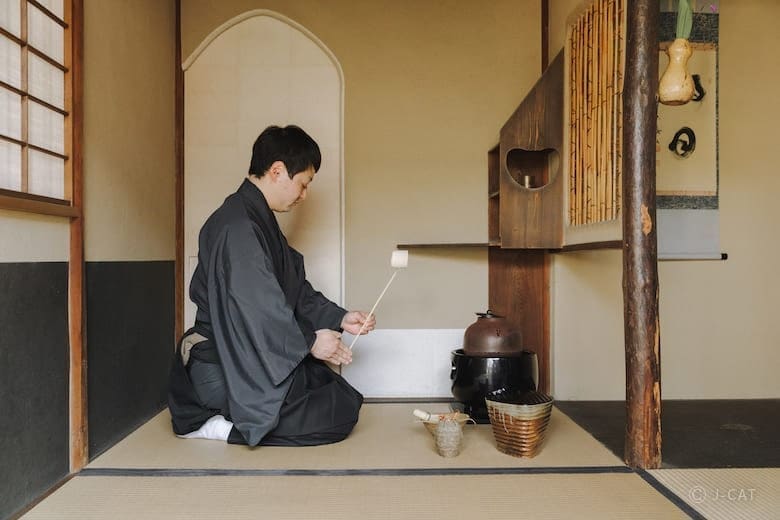
The Japanese tea ceremony, or Sado, is a choreographed ritual of preparing and serving Japanese green tea, matcha, alongside traditional sweets to balance its bitter taste. Participating in a tea ceremony is an exercise in mindfulness, respect, and aesthetics, offering a glimpse into a centuries-old tradition that celebrates the simple act of sharing a bowl of tea. Just try not to slurp your tea too loudly, or you might disturb the tranquility.
Ikebana (Flower Arranging)

Dating back to the 7th century, Ikebana is the Japanese art of flower arranging, focusing on harmony, balance, and simplicity. It’s a contemplative activity where participants learn to see beauty in the form, line, and color of plants and flowers. Engaging in Ikebana, expect to cultivate not just flowers, but patience, as you discover that sometimes the perfect arrangement is one that looks effortlessly thrown together, even though it took you an hour.
Japanese Incense Ceremony (Kodo)
Kodo, the “Way of Fragrance,” is the Japanese art of appreciating incense and is one of the three classical Japanese arts of refinement (along with ikebana for flower arrangement, and chado for tea ceremony). It involves using incense within a structured ceremony to sharpen senses, relax the mind, and find spiritual calm. The practice is a sensory journey, reminding participants to take a moment and smell the… well, incense. It’s a perfect activity for those who love deep relaxation but find meditation too quiet.
Kimono Wearing
Kimono wearing offers a chance to don traditional Japanese attire, learning about its history, symbolism, and the intricate process of putting on a kimono properly. Participants will experience the elegance and complexity of this garment, which is both a work of art and a cultural symbol. It’s an opportunity to take the phrase “dressed to impress” to a whole new level, as long as you remember not to take giant strides.
Geisha Culture

Geisha, also called geiko and maiko (apprentice geisha) in Japan, emerged in the 18th century in Japan. They were highly skilled entertainers known for their ability to engage in witty conversation, perform traditional Japanese arts like dance and music (specifically, instruments such as the shamisen), participate in tea ceremonies, and host gatherings in tea houses and traditional Japanese restaurants. What made them iconic in modern culture though, is their appearance in modern literature and films, with their one-of-a-kind makeup and hairstyle, and beautiful kimonos.
Today there are only a few thousand geiko and maiko in activity, mainly in hanamachi (花街, flower town), districts where geisha live and work in Japan – the biggest and most famous one being Gion in Kyoto. A geisha experience can take several forms, including:
- Private dinners and entertainment with real geisha (read my full review of a private dinner with geisha in Kyoto)
- Cultural exhibitions and museums
- Walking tours around hanamachi
- Makeover experiences
If you’re interested, I’ve written a full guide about where to see and meet geisha in Kyoto.
Attending a geisha experience is like stepping back in time and might leave you mesmerized, or feeling slightly underdressed and under-talented. It’s a world where every detail matters, from the fold of a kimono to the tilt of a head, leaving you with a profound appreciation for the arts and possibly a slight envy of being born in Japan 200 years ago.
Oiran Experience (Traditional Courtesan Culture)
Samurai Experience
The Samurai, a revered warrior class in feudal Japan, were known for their strict adherence to the Bushido code, which emphasized virtues such as honor, discipline, and loyalty. Originating in the 12th century, Samurai were not only skilled in martial arts but also in various cultural practices like tea ceremony and calligraphy.
Today, a Samurai experience immerses participants in the world of Japan’s ancient warriors, teaching about their history, code of ethics (Bushido), and martial arts. Expect to handle samurai swords (safely), learn about the armor, and maybe even practice some moves. It’s a chance to live out those samurai fantasies, minus the actual battles and with much more emphasis on posing for pictures.
Ninja Experience
Ninjas, or shinobi, were covert agents in feudal Japan, known for their skills in espionage, guerrilla warfare, and assassination. Emerging in the 15th century, they played crucial roles in military campaigns. Today, there is no more use for Ninja. But a Ninja experience offers a playful and educational dive into the mysterious world of Japan’s famed spies and assassins. Participants learn about the skills, tools, and techniques ninjas used for espionage and combat. Expect to throw shuriken (ninja stars) and maybe even learn how to move silently—though the only thing you’ll likely be sneaking up on is fun.
Ainu Cultural Experience (Indigenous People of Japan)
The Ainu cultural experience offers a unique insight into the customs, crafts, and way of life of Japan’s indigenous people. Engaging with Ainu culture, expect to learn about their rich heritage through traditional dance, music, and craft-making. It’s a rare opportunity to understand a deeply rooted yet often overlooked part of Japan’s history. Plus, you might get to meet some of the coolest bears in Japan—in Ainu folklore, that is.
Japanese Festival Participation (e.g., Gion Matsuri)
Yokai (Japanese Folklore) Exploration
Yokai exploration delves into the fascinating world of Japanese folklore, populated by a myriad of supernatural creatures. From mischievous tanuki to mysterious kappa, understanding yokai offers insight into Japan’s cultural psyche. It’s an experience that might not only enrich your knowledge but also keep you checking under your bed at night—just in case.
Meditation and Relaxation – 6 Ways To Experience Zen in Japan
Zen Meditation Session
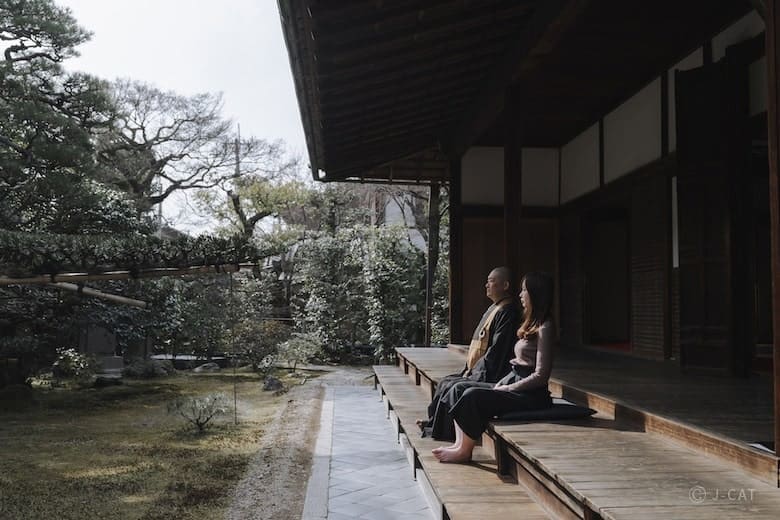
Introduced to Japan from China in the 12th century, zen meditation, or Zazen, focuses on finding inner peace and enlightenment through deep contemplation and mindfulness. Nowadays, you can participate in special meditation led by Zen monks, especially in temples in Kyoto.
A Zen meditation session offers a moment of calm and introspection in the often-hectic pace of modern life. Participants learn about the principles of Zen Buddhism and practice seated meditation (zazen), focusing on posture, breathing, and mindfulness. It’s a chance to quiet the mind and maybe even achieve a moment of enlightenment—or at least a break from your phone.
Shukubo (Temple Stay)
A Shukubo, or temple stay, is your all-access pass to living like a monk without the lifetime commitment. Originally accommodations for pilgrims, shukubo now welcome visitors from all over the world. But this experience offers more than just a place to sleep; it’s a deep dive into Buddhist practices, meditation, and vegetarian cuisine that’s so good, you might forget you’re missing meat. Expect early mornings, tranquil surroundings, and the kind of peace and quiet that makes you realize just how loud your thoughts are. It’s perfect for those seeking spiritual rejuvenation, or anyone who’s ever wondered if they could actually wake up for a 4 AM meditation bell without hitting snooze.
Temple Tour
A temple tour in Japan is like a real-life “choose your own adventure” book, except the choices are between serenity, enlightenment, and more serenity. Exploring these sacred sites offers not just a peaceful retreat but also a crash course in architectural beauty and spiritual history. Walking through these sacred spaces is a reminder that sometimes the most important journeys are the ones that take us inward. Just remember, the true path to enlightenment might also include figuring out how to wear your shoes again after you’ve taken them off at every stop.
Onsen (Hot Spring) Visit
Onsen, natural hot springs found throughout Japan, have been an integral part of Japanese culture for thousands of years. They’re a cultural institution, revered for their relaxing and restorative properties. There are a lot of onsen towns located in scenic areas, some of which you might have heard of: Hakone, Beppu, Kusatsu, or Noboribetsu. Wherever you choose to go, an onsen visit is a must for understanding the Japanese way of communal relaxation and respect for nature. And it’s amazing how bathing naked with strangers in natural hot springs can wash away all your troubles.
Bonsai Tree Class

Bonsai, the art of cultivating miniature trees, originated from similar practices in ancient China, before being embraced in Japan over a thousand years ago. It’s deeply intertwined with Japanese Zen Buddhism, symbolizing harmony and balance.
A Bonsai tree cultivation class teaches the delicate art of growing and shaping these miniature trees. It’s a practice of patience, precision, and care, where participants learn about trimming, wiring, and watering. Expect to develop a tiny green thumb and possibly a new sense of zen, unless you’re stressing over every leaf.
Japanese Gardening
Japanese Gardening is an art form that combines elements of nature with philosophical concepts, creating serene and meticulously arranged landscapes. Engaging in this activity, expect to learn about the principles of harmony, respect for nature, and the importance of every stone and plant placement. It’s a chance to practice patience and maybe even achieve zen—if you can manage not to get too distracted by the occasional stubborn plant.
Arts and Performance – 10 Traditional Japanese Disciplines
Taiko Drumming
Taiko drumming is a powerful and dynamic form of traditional Japanese music involving large drums and choreographed movement. It’s an energetic performance that combines rhythm, physical strength, and teamwork. Experiencing taiko drumming, whether watching or participating, you can expect to feel the reverberations deep in your soul, energizing your body and mind. It’s not just music; it’s a physical workout that might just leave you more fit than a typical gym session.
Shamisen Playing
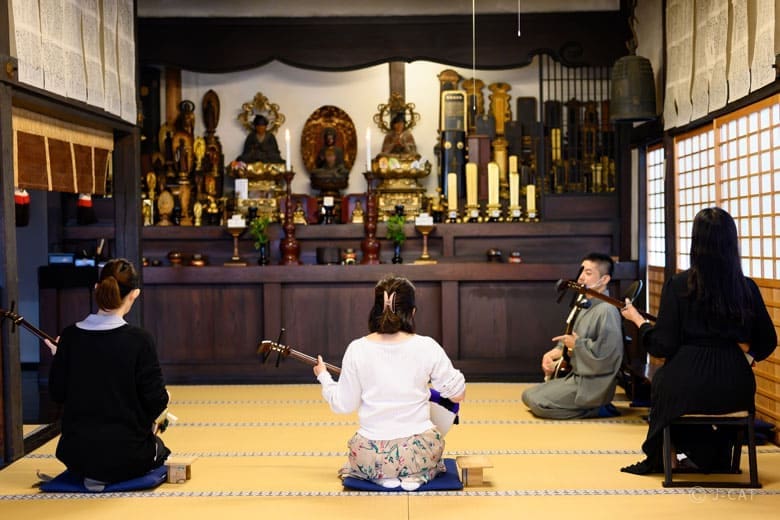
Diving into shamisen playing, you’re entering the world of the traditional three-stringed instrument that’s like the guitar’s cooler, older sibling who studied abroad. Learning to play the shamisen involves mastering the art of striking strings with a bachi (plectrum) to produce sounds ranging from deeply emotional to surprisingly funky. Prepare for a musical journey that might leave your fingers sore but your soul invigorated—just don’t expect to become a rockstar after mastering the shamisen, unless your audience is very, very traditional.
Koto Playing
Koto playing offers a foray into the elegant world of this long, zither-like instrument, capable of producing sounds that can soothe even the most frazzled of nerves. It’s like playing a piano, but horizontally, and with a touch of Zen. In a koto workshop, you’ll learn to pluck strings with precision and grace, discovering that the real challenge is making it sound as serene as it looks—yes, it’s supposed to sound like music, not a catfight.
Shakuhachi (Bamboo Flute) Playing
Shakuhachi playing involves mastering the traditional Japanese bamboo flute, known for its deep, resonant sound and connection to Zen meditation. Learning to play the shakuhachi, you can expect to delve into a practice that is as much about creating music as it is about finding inner peace. Just remember, achieving the perfect note is rewarding, but don’t be surprised if your first sounds scare away more than just your stress.
Noh Theater
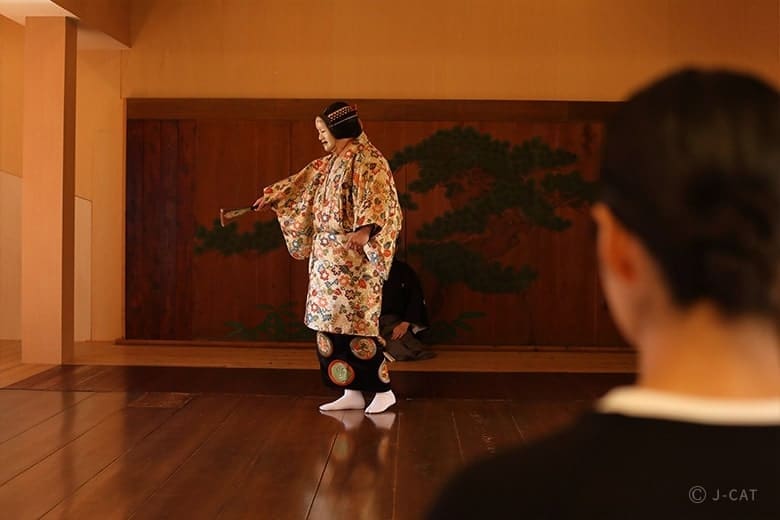
Noh theater is one of the oldest forms of theater in Japan, combining drama, music, and dance into a subtle and profound performance. Watching or participating in Noh theater, expect to experience a form of art that values minimalism and depth, where every gesture and expression carries weight. It’s a test of attention span and an opportunity to see if you can truly appreciate the art or if you’re just nodding along.
Kabuki Theater Show
Kabuki theater, dating back to the early 17th century, is a traditional Japanese form of drama known for its elaborate makeup, costumes, and stylized performance. Developed by Izumo no Okuni, an entertainer and shrine maiden, this art form became popular among the masses for its dynamic storytelling and unique blend of dance, music, and drama.
Watching a Kabuki theater show today is an explosion of color, drama, and traditional music, showcasing Japan’s rich theatrical tradition. Expect elaborate costumes, intricate makeup, and exaggerated expressions that tell stories of historical events, moral conflicts, and love. It’s a visual feast that might leave you with a sudden urge to express all your emotions in the most dramatic way possible.
Rakugo (Japanese Sit-Down Comedy) Show
Attending a Rakugo show, a form of Japanese sit-down comedy dating back to the 17th century, offers laughs and insight into Japanese humor. The performer (called Rakugoka) sits on stage, using only minimal props and a fan to tell a humorous story. It’s an experience that showcases the art of storytelling and the universal language of laughter. Just be prepared for the possibility that you might not get every joke, but the performance is enjoyable all the same.
Manzai (Traditional Stand-up Comedy)
Manzai is a style of traditional Japanese stand-up comedy featuring a duo, typically playing the roles of the straight man and the funny man. Experiencing manzai, expect fast-paced banter, wordplay, and cultural quips that provide insight into Japanese humor. It’s a great way to lighten the mood, and who knows, you might pick up a joke or two to impress (or confuse) your friends.
Nihon Buyo (Classical Japanese Dance)
Nihon Buyo is a form of classical Japanese dance that combines elements of Kabuki theatre, traditional music, and detailed costuming. Participating in Nihon Buyo, expect to learn about the delicate gestures and expressive movements that tell stories and convey emotions. It’s an opportunity to step into a world of grace and poise, and if you’re not careful, you might just find yourself trying to incorporate dramatic kabuki moves into your everyday life.
Haiku Writing
Sports – 6 Traditional Japanese Sports You Can Experience
Sumo Wrestling
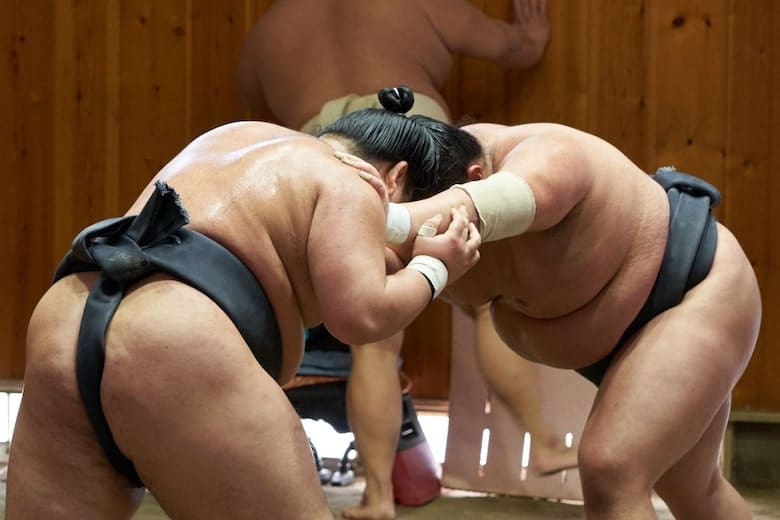
Sumo, Japan’s national sport, has its origins in ancient Shinto rituals. It dates back over 1,500 years and was originally performed to entertain the Shinto deities. Sumo combines elements of sport, culture, and religious ritual, making it unique. Watching Sumo wrestling allows spectators to witness a sport deeply intertwined with Japanese history and tradition.
You have two ways of experiencing Sumo wrestling in Japan:
- The first way is the simplest and is the one where you’ll feel the closest with this discipline. You can visit a Sumo stable in Tokyo to attend a Sumo morning practice. You’ll be able to watch Sumo train from up close, and maybe interact with them after the training is over.
- The second way is to attend a Sumo tournament. Happening a few times a year in different cities across Japan, you’ll be able to see the top Sumo compete.
Kendo (Japanese Swordsmanship)
Kendo, meaning “The Way of The Sword,” is a traditional Japanese martial art that uses bamboo swords (shinai) and protective armor (bogu). It’s a disciplined practice focusing on technique, respect, and self-improvement. Stepping into the dojo for kendo, expect to learn not only how to wield a sword but also the importance of etiquette, posture, and mental focus. Fair warning: you might get a bit more acquainted with bamboo than you’d prefer.
Read also: What Is Kendo and Best Kendo Experiences: The Ultimate Guide
Traditional Japanese Archery (Kyudo)
Kyudo, which kanji (弓道) means “the way of the bow” in Japanese, has its origins in the samurai class and has been practiced for centuries in Japan. Also called traditional Japanese archery in the West, it’s more than just hitting a target; it’s a disciplined practice focusing on posture, technique, and spirituality. Engaging in kyudo, expect to learn the art of the bow, which is as much about the process and form as it is about accuracy. It’s a test of focus and patience, offering a moment of zen with every arrow released.
Yabusame (Horseback Archery)
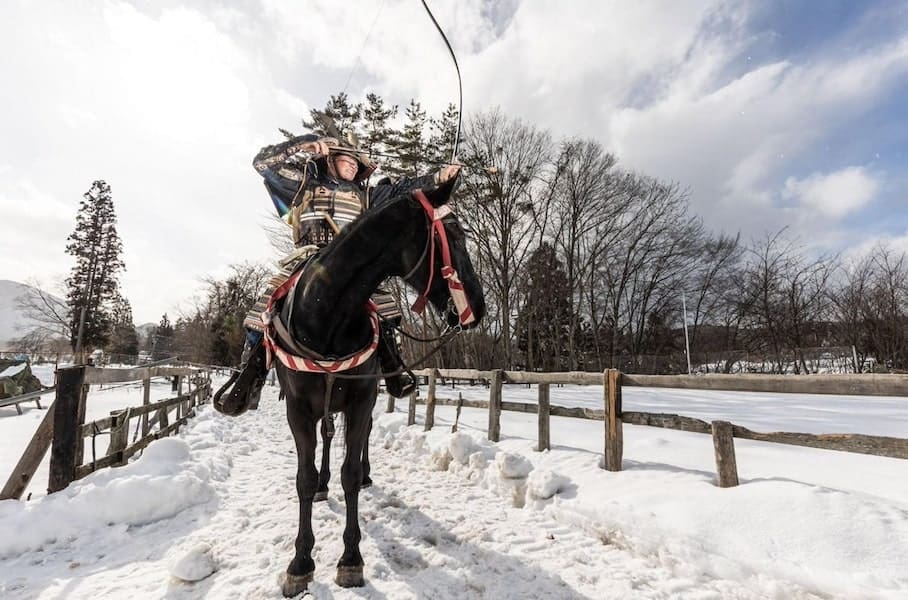
Yabusame is the exhilarating practice of traditional Japanese horseback archery, where archers shoot at targets while galloping on horseback. It dates back to the early Kamakura period (1185-1333) and was originally practiced by samurai to improve their archery skills. It’s a spectacular display of skill, concentration, and tradition. Participating in or watching yabusame, expect an adrenaline rush and a unique insight into samurai martial arts. Just watching can be heart-pounding, never mind actually trying to hit a target while remembering to stay on the horse.
Read also: Yabusame: The Old Art of Japanese Mounted Archery And How to Experience It
Judo (Martial Art)
Judo, meaning “gentle way,” is a martial art that focuses on grappling and throws, emphasizing technique over brute strength. Participating in judo, expect to learn falls, holds, and the art of turning an opponent’s force against them. It’s also a great way to discover muscles you never knew existed, as you’ll likely be sore in places you didn’t know could be sore.
Karate (Martial Art)
Karate, literally meaning “empty hand” in Japanese, is a martial art focusing on striking, kicking, and defensive blocking with arms and legs. Training in karate, you can expect to learn discipline, strength, and control, developing both body and mind. It’s also an opportunity to wear a cool belt that shows your progress, and who knows, you might just break a board or two—hopefully not by accident.
Gastronomy – 9 Traditional Japanese Food and Drinks
Sake Tasting and Brewery Tour
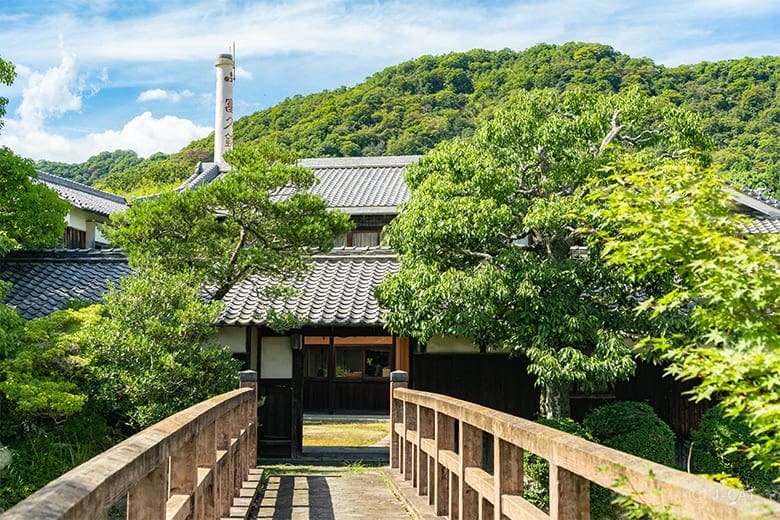
Sake tasting and brewery tours offer an immersive experience into the world of Japanese rice wine. You’ll learn about the intricate process of sake brewing, from rice selection to fermentation, and taste different varieties to appreciate their subtle differences. Expect to leave with a buzz, not just from the sake, but from the rich history and craftsmanship behind Japan’s iconic beverage. And remember, you’re not here for the drinking; you’re here for the “culture”. Are you?
Sake Pairing

Sake pairing is the art of matching Japan’s legendary rice wine with dishes in a way that even food critics would approve. It’s a culinary journey through flavors where the main challenge is remembering the names of the sakes after the third pairing. Dive into the world of junmai, ginjo, and daiginjo, and discover that sake goes with more than just sushi—it also pairs well with bragging about your newfound pairing skills.
Kaiseki Cuisine (Traditional Multi-course Meal)
Kaiseki cuisine is a traditional Japanese multi-course meal known for its meticulous preparation, seasonal ingredients, and exquisite presentation. Experiencing kaiseki is like attending a symphony of flavors and textures, where each dish tells a story of nature and craftsmanship. It’s a culinary journey that might leave you pondering whether to eat the dishes or frame them as art.
Sushi Making
Although originally from China, sushi is now completely associated with Japanese cuisine. It’s been part of the Japanese food scene for centuries and with a huge popularity in the West, I’d say it’s here to stay for some time. Participating in a sushi-making class will teach you how to prepare perfect sushi and maybe you’ll finally discover how a slice of raw fish on sticky rice can be so damn good.
Wagashi (Japanese Sweets) Making

Wagashi making introduces the art of creating traditional Japanese sweets, often served during tea ceremonies. These delicacies, dating back to the Edo period (1603-1868), are crafted from natural ingredients to resemble seasonal motifs. Participants learn the meticulous techniques to shape and color these edible works of art. It’s a sweet experience that combines culinary skill with creativity, and you get to eat your mistakes—a delicious way to learn.
Soba Noodle Making
Mochi Making (Rice Cake)
Mochi making involves pounding sticky rice into a smooth paste and forming it into balls or other shapes, often filled with sweet bean paste. Participating in a mochi-making workshop, expect a workout for your arms and a treat for your taste buds. Plus, there’s the fun of seeing who can make the roundest, smoothest mochi before giving in to the temptation to just eat it.
Shojin Ryori
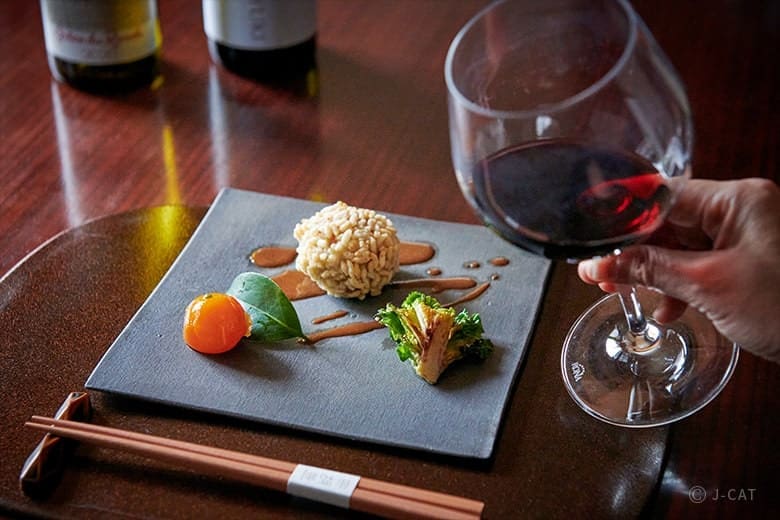
Shojin Ryori is the art of Buddhist vegetarian cooking, emphasizing simplicity and mindfulness in the preparation and consumption of food. This Buddhist cuisine focuses on balance and natural flavors, proving that spiritual practice can be achieved through tofu and seasonal vegetables. Eating Shojin Ryori is like a meditation, where each bite is a step closer to enlightenment, or at the very least, a healthier diet.
Tsukemono (Japanese Pickling)
Tsukemono refers to the wide variety of Japanese pickled vegetables, an essential part of the Japanese diet. In a tsukemono-making class, expect to learn the techniques to pickle your own vegetables, discovering the balance of flavors that can complement any meal. It’s a skill that promises your fridge will never be without a pop of color and taste—just be prepared for the moment when you realize you’ve started evaluating vegetables based on their pickling potential.
